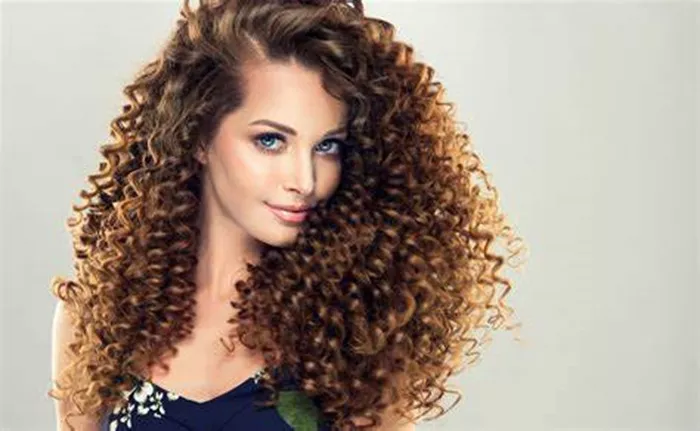Curly hair requires special care to maintain its natural beauty and health. One of the most common questions among those with curly hair is whether to comb it wet or dry. This decision can significantly impact the health and appearance of curly hair. In this article, we will explore the pros and cons of combing curly hair wet versus dry, the best techniques and tools to use, and expert tips for maintaining healthy, beautiful curls.
The Structure and Composition of Curly Hair
To understand the best practices for combing curly hair, it’s essential first to understand its unique structure and composition. Curly hair tends to be drier and more prone to breakage than straight hair due to its shape. The twists and turns of curly hair make it difficult for natural scalp oils to travel down the hair shaft, leading to dryness. Additionally, curly hair’s structure makes it more susceptible to tangling and knotting.
The Science Behind Wet vs. Dry Combing
Wet Combing
Combing curly hair when it’s wet is a common practice recommended by many hair care professionals. Here are the benefits and drawbacks:
Pros:
Reduced Breakage: Wet hair is more elastic and can stretch more without breaking. This elasticity can make it easier to detangle knots without causing breakage.
Easier Detangling: Wetting the hair makes it softer and more pliable, which can make detangling easier. Conditioners and detangling sprays used on wet hair can further reduce tangles and knots.
Defined Curls: Combing hair when wet can help define the natural curl pattern, reducing frizz and making the curls look more uniform and polished.
Cons:
Fragility: Wet hair is at its weakest state. Excessive combing or rough handling can still lead to breakage, even if the hair is more elastic.
Time-Consuming: Wet hair can take longer to comb through, especially if it’s very thick or prone to tangling.
Dry Combing
Dry combing curly hair is less common but has its own set of advantages and disadvantages:
Pros:
Stronger Hair: Dry hair is at its strongest state, reducing the risk of breakage from combing.
Volume and Texture: Combing dry hair can create more volume and texture, which some people prefer for certain hairstyles.
Less Time-Consuming: Dry hair is easier to manage in terms of time, as it doesn’t require the same careful handling as wet hair.
Cons:
Increased Frizz: Combing dry hair can disrupt the natural curl pattern, leading to frizz and a less defined curl structure.
More Breakage: Without the elasticity provided by water, dry hair can be more prone to breakage, especially if it’s already dry or damaged.
Difficult Detangling: Dry hair can be harder to detangle, which can lead to more breakage if not done carefully.
Best Practices for Combing Curly Hair
Whether you choose to comb your curly hair wet or dry, following best practices can help minimize damage and maintain healthy curls.
Wet Combing Techniques
Use a Wide-Tooth Comb: A wide-tooth comb is gentler on curls and reduces the risk of breakage. Start from the ends and work your way up to the roots to avoid pulling and tangling.
Apply Conditioner: Use a good-quality conditioner or detangling spray to provide slip and make the hair easier to comb through.
Be Gentle: Avoid tugging or pulling on the hair. Use your fingers to gently separate any stubborn knots before using a comb.
Section Your Hair: Divide your hair into manageable sections to make combing easier and more effective.
Rinse with Cool Water: After detangling, rinse your hair with cool water to seal the cuticle and reduce frizz.
Dry Combing Techniques
Use a Detangling Brush: If you prefer to comb your hair dry, use a brush specifically designed for detangling. These brushes have flexible bristles that minimize breakage.
Work in Sections: Just like with wet combing, section your hair to make the process easier and reduce the risk of breakage.
Use a Leave-In Conditioner: Apply a leave-in conditioner or oil to provide slip and reduce friction while combing.
Be Gentle: Handle your hair with care, avoiding excessive force or rough handling.
See also: Should I Use a Brush or Comb for Curly Hair?
Expert Tips for Maintaining Healthy Curly Hair
Hydration and Moisture
Keeping curly hair hydrated is crucial for preventing dryness and breakage. Use moisturizing shampoos and conditioners, and consider deep conditioning treatments regularly. Leave-in conditioners and oils can help lock in moisture and keep curls looking their best.
Protective Hairstyles
Wearing protective hairstyles can help minimize damage and reduce the need for frequent combing. Braids, twists, and buns are great options that protect the hair while maintaining its natural beauty.
Avoid Heat Styling
Heat styling tools can cause significant damage to curly hair, leading to dryness and breakage. If you must use heat, always use a heat protectant spray and opt for lower temperatures.
Regular Trims
Regular trims are essential for maintaining healthy curly hair. Trimming the ends every 6-8 weeks can prevent split ends and keep your curls looking fresh and bouncy.
Silk or Satin Pillowcases
Sleeping on silk or satin pillowcases reduces friction and helps maintain the integrity of your curls. Cotton pillowcases can cause frizz and breakage, so switching to silk or satin can make a big difference.
Diet and Nutrition
A healthy diet rich in vitamins and minerals supports overall hair health. Ensure you are getting enough vitamins A, C, D, and E, as well as biotin and omega-3 fatty acids, to promote strong and healthy hair.
Conclusion
The decision to comb curly hair wet or dry depends on individual preferences and hair needs. Wet combing is generally gentler and helps define curls, while dry combing can add volume and texture. Regardless of your choice, following best practices and expert tips will help maintain healthy, beautiful curls. Remember to be gentle, use the right tools, and keep your hair hydrated to enjoy the best results.


